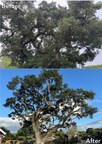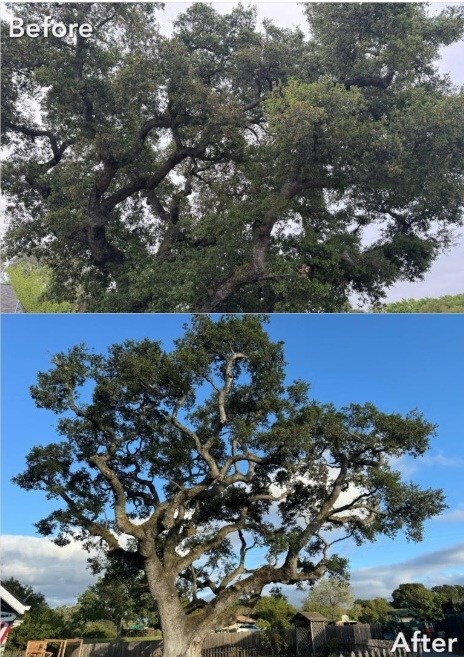Fall is the ideal time to prune trees and shrubs as they enter dormancy. Jesus Morales of Golden State Tree Service explains why fall pruning benefits plant health.
PASO ROBLES, Calif., Oct. 31, 2025 /PRNewswire-PRWeb/ -- The leaves starting to fall from the trees is a sure sign that winter is approaching. It's also a sign that it's time to get the trees and shrubs pruned. Fall is when trees start dormancy. Deciduous trees signal this by dropping their leaves. Even evergreen trees and shrubs slow their growth in the fall, resting up for spring growth. Why do we prune trees in the fall? Jesus Morales, owner of Templeton's Golden State Tree Service, answers that question.
Top reasons for pruning in the fall include:
- Fall pruning is especially beneficial for fruit and nut trees. After the last fruit is harvested, pruning creates an environment for strong crop yields the following year.
- Removing dead, dying, weak, or overreaching branches in the fall reduces the risk of branches breaking from storms and perhaps causing damage.
- Pruning the remains of broken branches helps keep the tree healthy. The jagged edges left after a branch falls leave the tree vulnerable to insect infestation or disease.
- Correct pruning allows more sunlight into the tree, promoting photosynthesis for energy and healthy growth. Pruning in the fall allows the tree to store more energy for spring growth.
- Removing crowded branches, which can be more vulnerable to rubbing together and damaging the tree, breaking, and stunting growth.
- Prevents long-term overgrowth that can crowd out other plants.
- Fall pruning is a healthy way to control tree shape and height and prevent interference with overhead wires.
- Pruning helps keep trees healthy by improving airflow and sunlight, and also stimulating growth. Sunlight is a tree's primary source of energy, aiding in the photosynthesis process that produces nutritional sugars, and in transpiration—the process of moving water through the tree—and in absorbing nutrients from the ground. Working with experts, like the Templeton Tree Service team, ensures every tree on the property gets the best attention.
Depending on the disease and how much of an individual tree is affected, pruning can potentially save it. Pruning also benefits drought-stressed and fire-damaged trees:
- It's important to clean equipment after pruning a diseased tree to prevent transferring the disease to another tree. Some professionals recommend cleaning tools after each cut to prevent transferring diseased tissue to healthy tissue in the same tree.
- Prune drought-stressed trees by removing dead and dying branches, and continuing to monitor the tree for stress.
- Wait around three months after a fire before pruning a fire-damaged tree. Then assess the tree to determine which parts are alive. Start by pruning dead, broken, or hazardous limbs. Allow the tree to resprout before additional pruning.
While fall is the ideal time to prune, it's not necessary to wait until then when a tree is damaged or diseased. Emergency pruning is appropriate at any time. The Templeton tree service crew responds 24/7 to emergencies, too. Waiting until fall can further stress a threatened tree that can potentially be saved.
Golden State Tree Service
Serving California's Central Coast
(805) 835-1013
Media Contact
Jacquelyn Iddings, Access Publishing, 8052269890, [email protected]
SOURCE Golden State Tree Service



Share this article